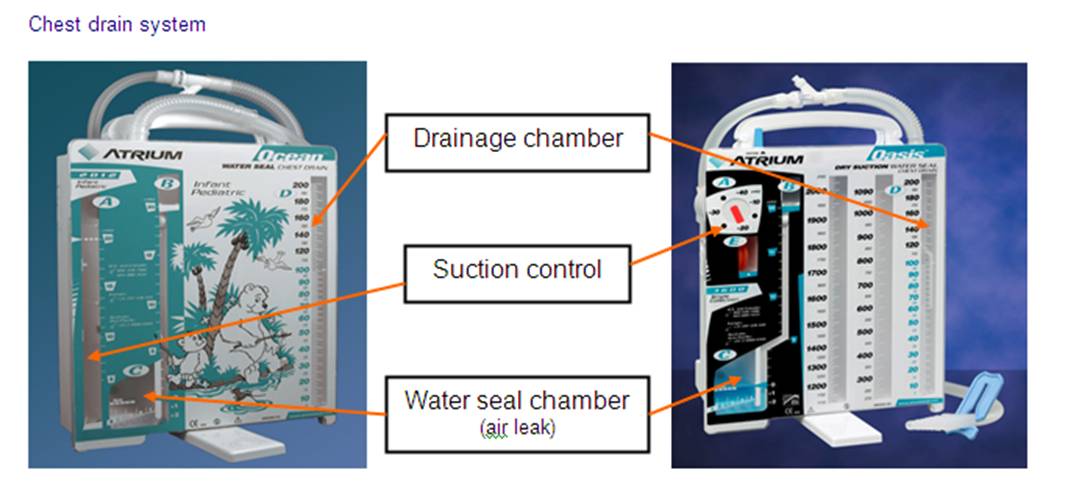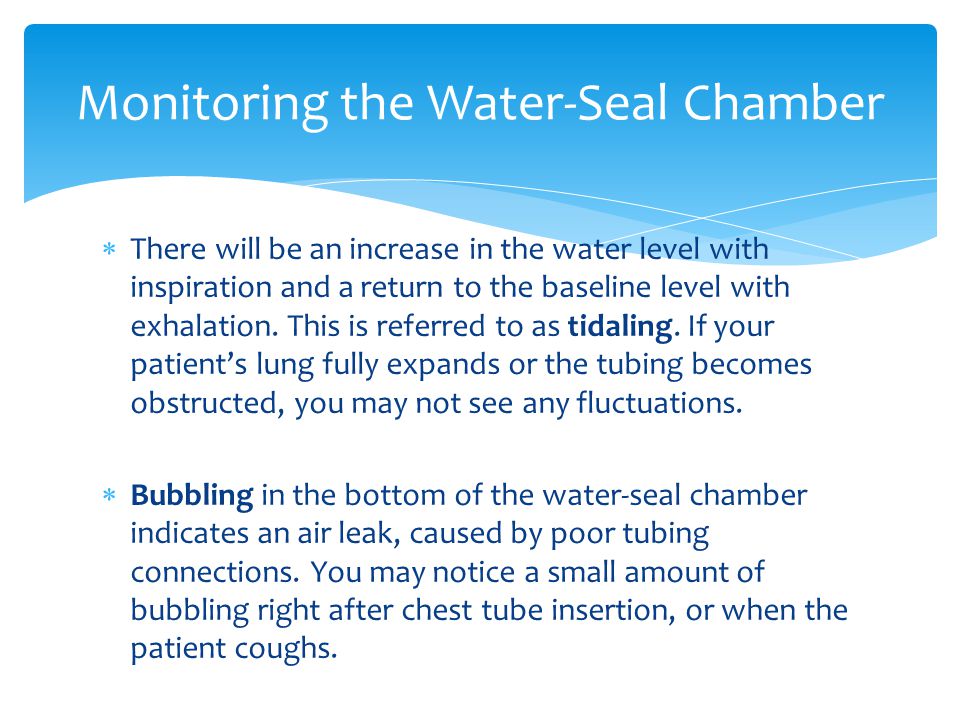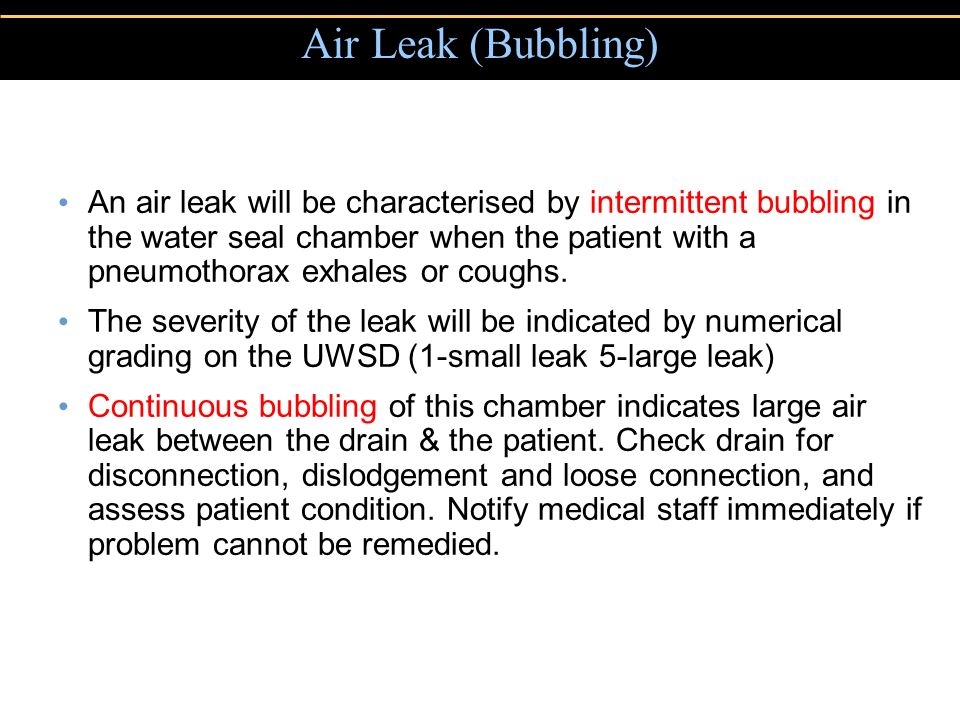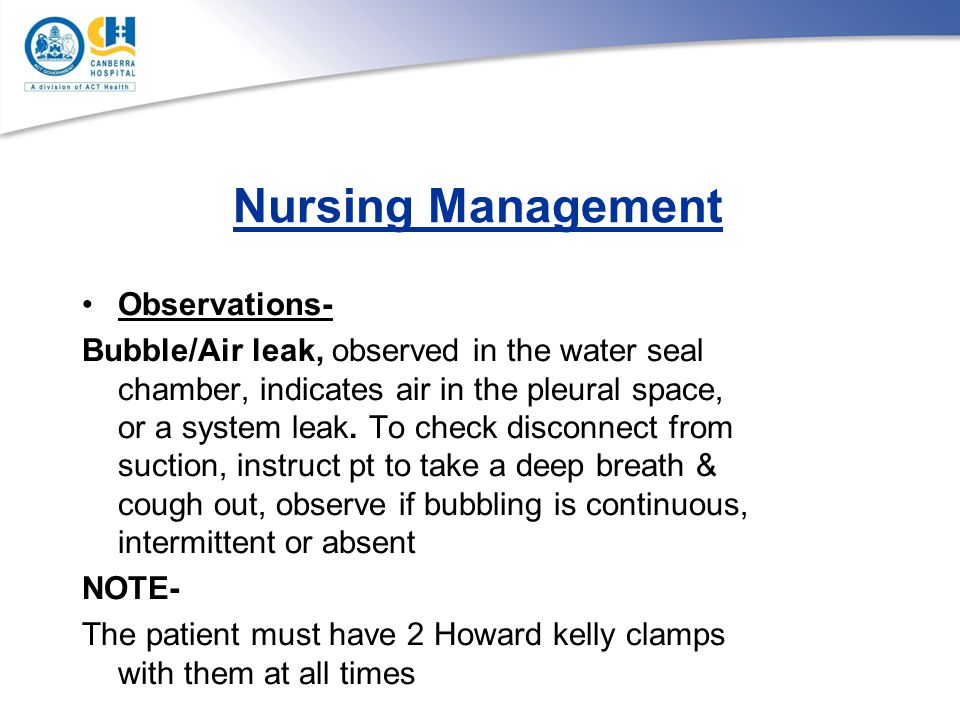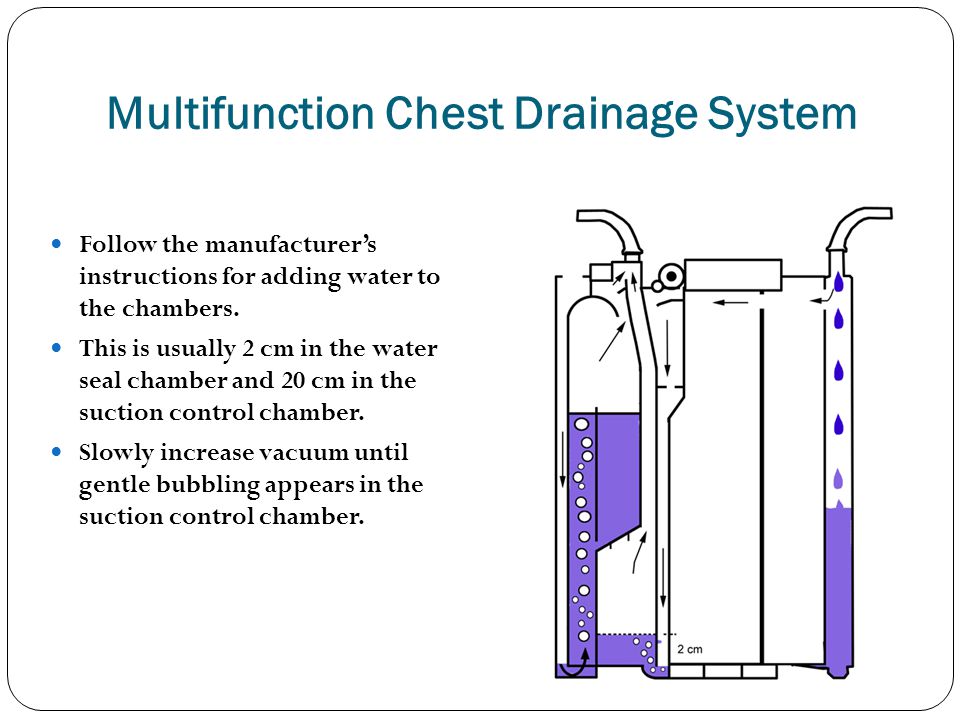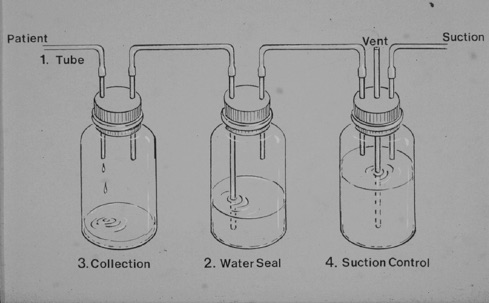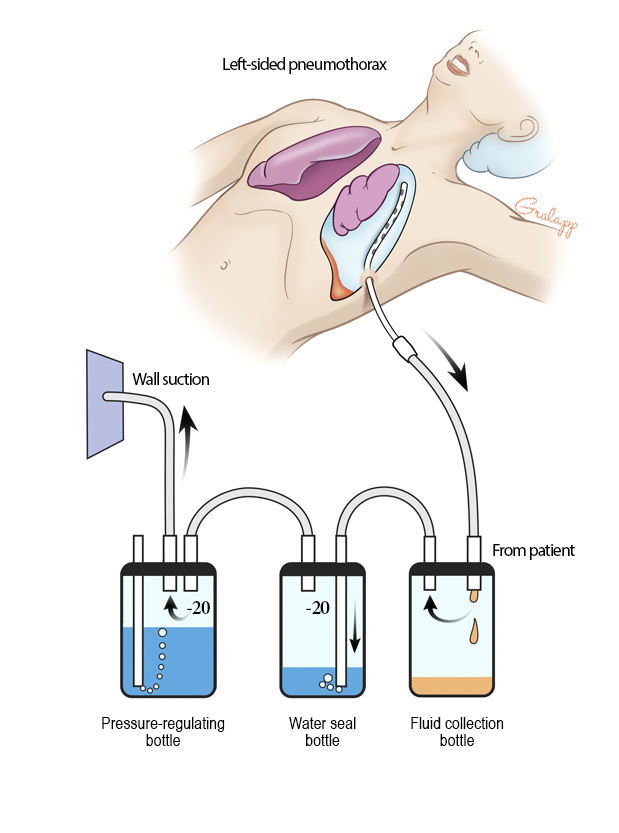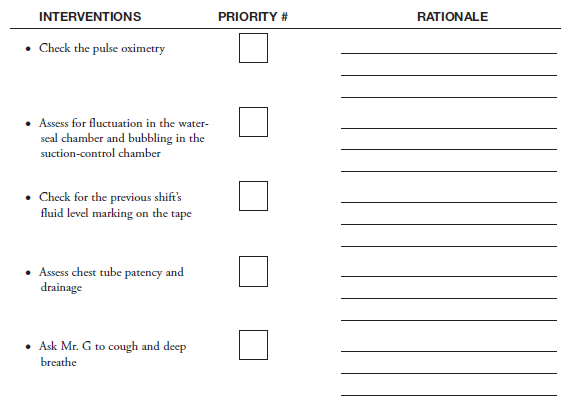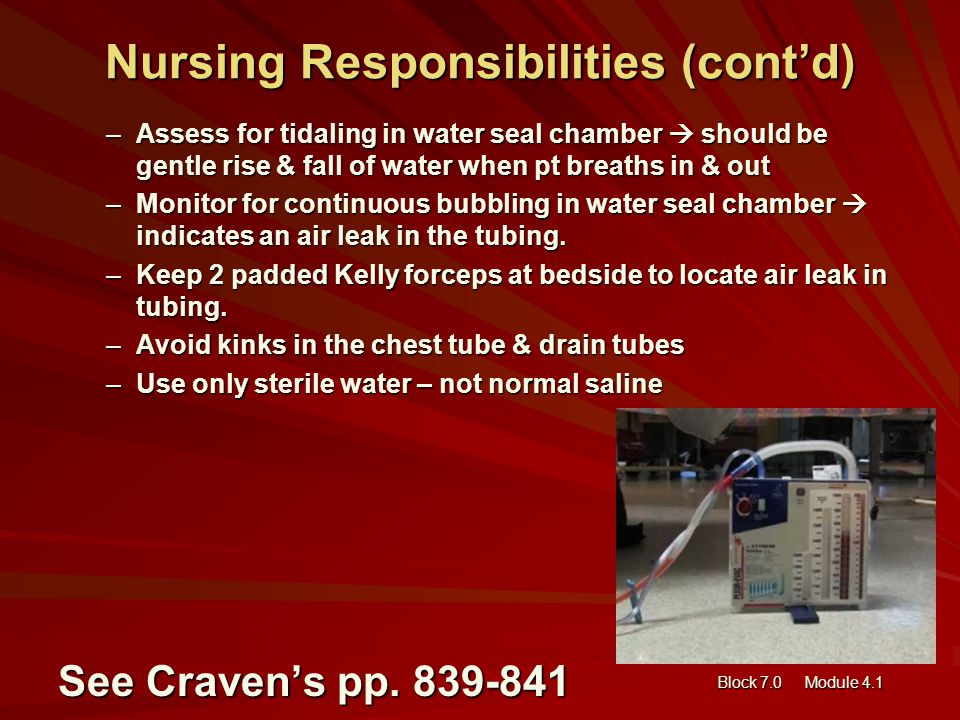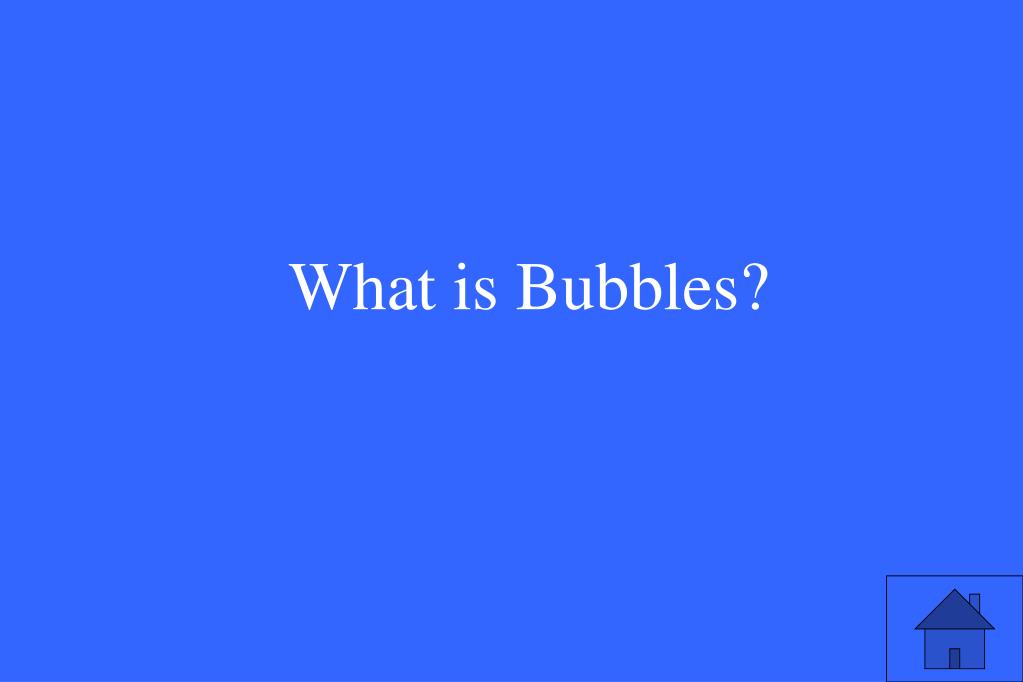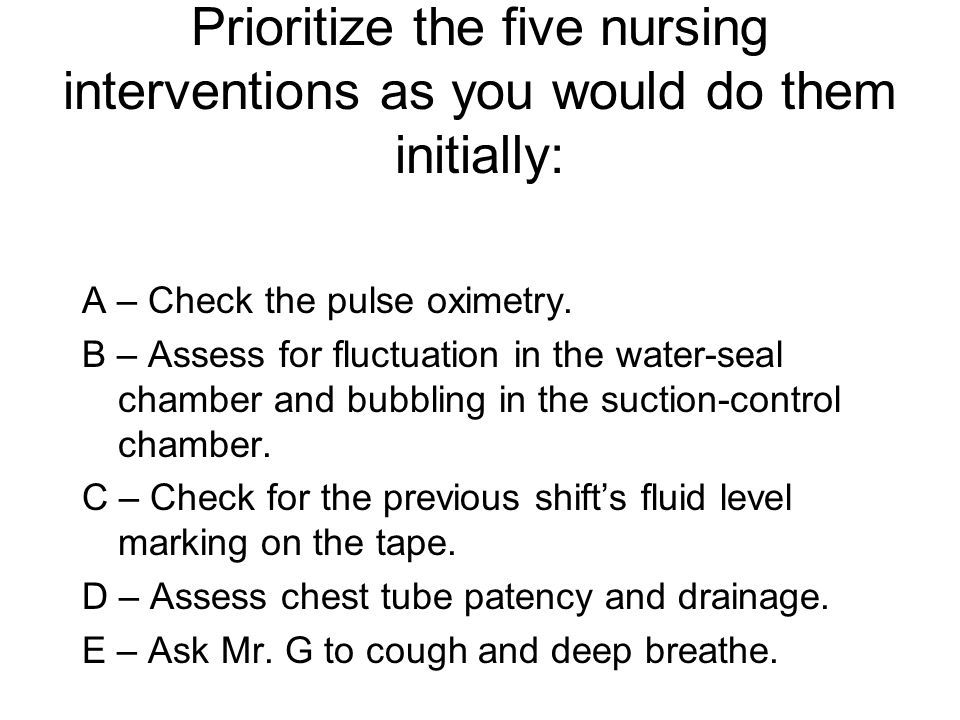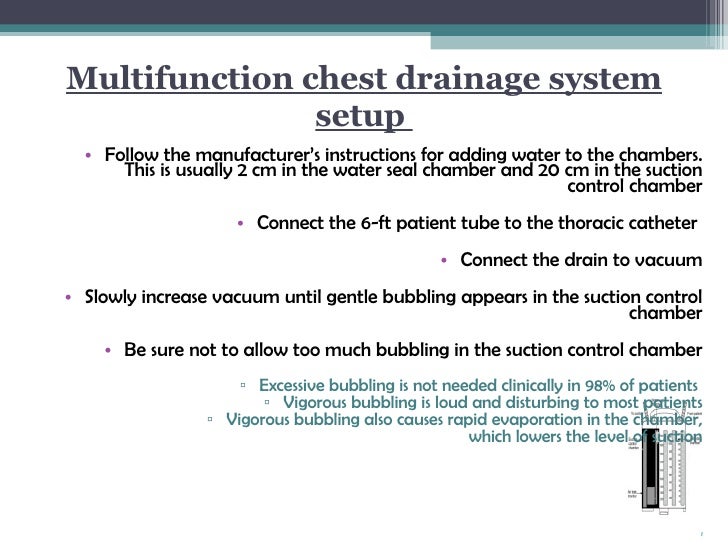Bubbling In Water Seal Chamber When Coughing
Does the leak occur with expiration or inpsiration.
Bubbling in water seal chamber when coughing. Bubbling occurs in the water seal chamber when air is entering the chest drain. Think of the lungs as wrapped in plastic. When excessive bubbling is observed in the water seal chamber the nurse should. If you don t the system may not be patent or working properly or the patient s lung may have reexpanded.
The water seal chamber is the one way valve that allows air to leave the pleural space as with a pneumothorax. The fluctuation shouldn t change while the tube is inserted because it s fluctuating due to normal ventilation. Look for constant or intermittent bubbling in the water seal chamber which indicates leaks in the drainage system. If the bubbling occurred in the water seal portion 2 then there is an air leak.
1 strip the chest tube catheter 2 check the system for air leaks 3 decrease the amount of suction pressure. Notify the health care provider immediately if you can t identify an external leak or correct it. If removing excess air is the goal of the chest drain then the water seal chamber may bubble inconsistently mainly on inspiration as the air leaves the chest. A quick reference guide starting at the chest tube.
Water seal chamber with respiratory effort the tubing may be occluded by a clot or kink or the lung may be fully re expanded bubbles are seen in water seal or air leak meter chamber tidaling is absent or less obvious determine the type of air leak check for tidaling check for air leaks has your patient developed an air leak. If the bubbling occured in the water suction 3 the bubbling is normal. Have no bubbling in water seal chamber if does indicates air leak. When all of the fluid has been drained if fluid was the reason for chest tube insertion there are others look them up indicated by a decreasing amount of drainage in the.
If no other air enters the system the bubbling should soon stop. It should resolve as the lung reexpands. You ll see bubbling in the water seal chamber when air enters the system. For example if the tube has moved and one of the eyelets of the chest tube is outside the chest.
Ask the person to cough if bubbling is present. Bubbles on forceful expiration or coughing not normal otherwise. Water suction chamber with the 20cm of water. Bubbling continues when air is entering the system.
After thoracic surgery a client has a chest tube connected to a water seal drainage system that is attached to suction. When you first apply suction there should be a little bubbling in the water seal as air is pulled through from the collection chamber. Should have fluctuating fluid level in water seal chamber. When searching for the source of an air leak use rubber tipped or padded clamps to.
If the water seal is continuously bubbling you should suspect an air leak. Have bubbling in suction control chamber. It should be continuous when the suction is on. To locate the leak s source such as a loose connection or from around the site assess the system from the insertion site back to the cdu.
Intermittent bubbling corresponding to respirations in the water seal chamber indicates an air leak from the pleural space. If bubbling in the water seal chamber is continuous suspect a leak in the system. You should see fluctuation tidaling of the fluid level in the water seal chamber. Intermittent bubbling in water seal chamber with forced expiration or cough is ok.
If none means obstruction or clot. Continuous bubbling in the water seal is abnormal and indicates an air leak. Here s what you have to ask.
